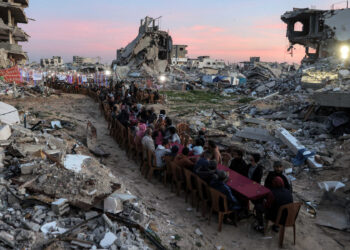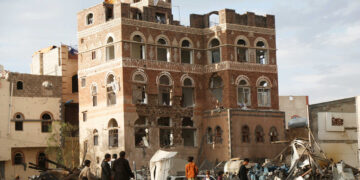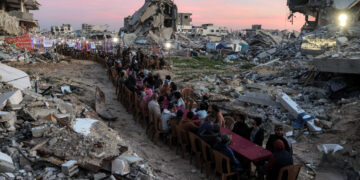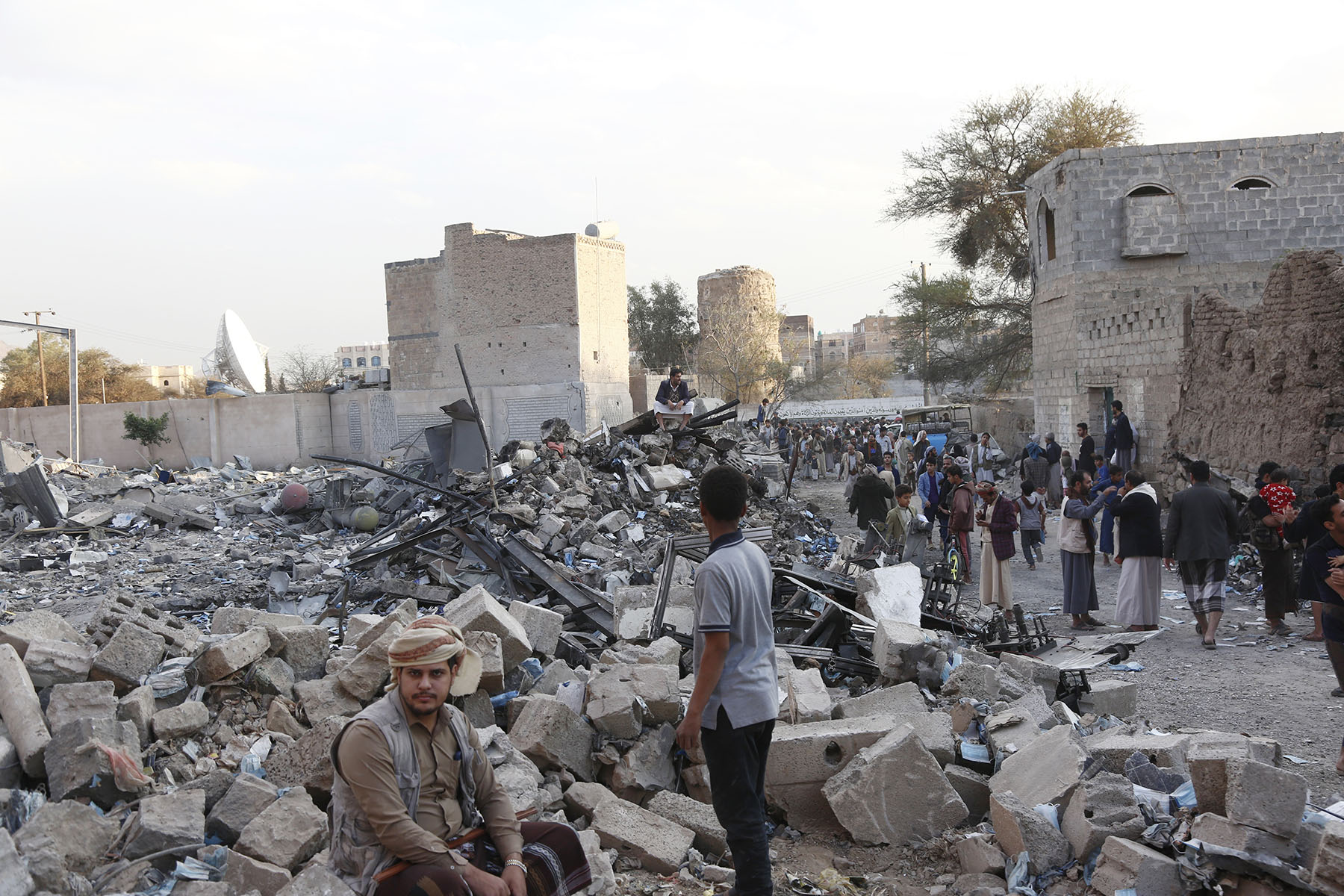A. Dirk Moses is the Anne and Bernard Spitzer Professor of International Relations at the City College of New York, the editor of the Journal of Genocide Research, and the author of The Problems of Genocide: Permanent Security and the Language of Transgression (2021).
In researching for my book, The Problems of Genocide: Permanent Security and the Language of Transgression, I chanced upon an extraordinary article by the American jurist Robert Jackson, in The New York Times Magazine in September 1945. Published after the Soviet Union, Britain and the United States issued the Charter of the Nuremberg Trials, Jackson, who was named their chief U.S. prosecutor, explained the impending proceedings to the American public. Entitled "The Worst Crime of All," he justified why Germany's war of aggression was the Charter's supreme crime: because all others—crimes against humanity and war crimes—derived from it. The article also drew a further, terrible conclusion in view of the U.S. dropping two atomic bombs on Japanese cities a month earlier: "If there are to be future wars, we have got to win them," he wrote. "And we can only win by being better killers, by killing more and killing more quickly than the enemy, by killing with less risk to ourselves."
This brazen argument struck me both as brutally honest and wanton, for Jackson was effectively advocating violating the legally established "principle of distinction" between combatants and noncombatants by casting warfare as conflict between peoples rather than military forces. "For the fact is obvious," he declared, "that modern war has become more and more a struggle between whole populations, not between armies alone. The issue is which shall be subjugated and which will survive." Consequently, he continued, it was necessary in future wars "to kill and maim the enemy and to destroy all that shelters him and all that he lives by not only in the field but at home." Killing the enemy's civilians until they surrendered was the strategy—as the unmentioned cases of Hiroshima and Nagasaki indicated. The Nazis, by contrast, had murdered civilians "for no military purpose," Jackson later said during the Nuremberg Trials.
This approach proved to be fatally prophetic. Ever since, governments of most stripes countenance inflicting enemy civilian casualties rather than endangering their own military forces. Bombing enemies—conceived as entire societies—into submission has been the preferred means, from the U.S. flattening of North Korea in the early 1950s and later in Vietnam, to the Russian shelling of Grozny, Chechnya, in the 1990s, to the Syrian government's barrel bombing of Aleppo and Homs and the Saudi-led destruction of Yemen.
Today, international law on genocide is working as it was designed to: allowing states to ruthlessly exterminate security threats while making it difficult to apply that law.
- A. Dirk Moses
But if Jackson was prophetic about the shape of postwar conflict, he was wrong about the worst crime. By the late 1940s, genocide replaced wars of aggression as the threshold that "shocked the conscience of mankind." And genocide's archetype was the Holocaust. States could not agree on defining wars of aggression, while Holocaust victims were becoming increasingly visible after serial trials of German perpetrators.
"The Holocaust was something entirely different," American historian and diplomat Deborah Lipstadt wrote years later, in an essay responding to the Trump administration's "flirtation" with antisemitism and Holocaust denial. "It was an organized program with the goal of wiping out a specific people. Jews did not have to do anything to be perceived as worthy of being murdered," she explained. "Old people who had to be wheeled to the deportation trains and babies who had to be carried were all to be killed. The point was not, as in occupied countries, to get rid of people because they might mount a resistance to Nazism, but to get rid of Jews because they were Jews."
A consequence of this familiar argument is to separate the Holocaust from other instances of civilian destruction. The Holocaust is not "just one in a long string of inhumanities," as Lipstadt and many others have long insisted. As a massive hate crime against innocent victims—meaning they were not involved in military conflict, and were not killed by military necessity—the Holocaust shaped the ideal victim type.
With the Holocaust as its archetype, genocide—rather than the Nuremberg Trials' triumvirate of crimes against peace, crimes against humanity and war crimes—became the gold standard of recognition for victim groups since the late 1940s. In the decades since then, there were serious allegations of genocide in many anti-colonial and postcolonial conflicts, like the Nigerian-Biafran War between 1967 and 1970, and the secession of East Pakistan to form Bangladesh in 1971. That they were not recognized as genocide and quickly forgotten—unlike the later atrocities in the 1990s in Rwanda and Bosnia—is no accident.
The states that thrashed out the Convention on the Prevention and Punishment of the Crime of Genocide at the United Nations in 1947 and 1948 designed it so that state sovereignty would not be compromised in waging international and non-international armed conflict. How did they do this? First, the U.N. convention states that genocide means the "intent to destroy, in whole or in part, a national, ethnical, racial or religious group, as such" by various means. "As such" requires that victims are targeted solely on the ground of their identity—for symbolic rather than material reasons, like warfare. The states negotiating the convention's definition deliberately modeled it on the Holocaust—understood as history's largest hate crime—to distinguish it from warfare and even population expulsions, including ethnic cleansing.
These states, after all, did not regard warfare itself as illegitimate. They had just defeated the Axis powers, destroyed their cities with fire and atomic bombs, and countenanced the forced expulsion of 12 million ethnic Germans from east-central Europe. The Cold War was beginning, and independence movements confronted the Western colonial empires reasserting control in Asia and northern Africa. For the war's victors, the sovereign right of states to engage in international and non-international armed conflict required the rescue of "military necessity" from its discrediting by the Nazi mode of exterminatory warfare and occupation.
Everyone understood that armed conflict impacted civilians dramatically. The official committee of experts' commentary on the draft Genocide Convention, written in part by the Polish jurist Raphael Lemkin—who had coined the term genocide during World War II, to describe the Nazi extermination campaigns—acknowledged that civilian populations were affected by modern warfare with "more or less severe losses." So it distinguished between armed conflict and genocide by arguing that in the latter, "one of the belligerents aims at exterminating the population of enemy territory and systematically destroys what are not genuine military objectives." Military objectives, by contrast, aimed at imposing the victor's will on the loser, whose existence was not imperiled. Killing masses of civilians was acceptable, if regrettable, when motivated by military goals: victory, not destruction.
The grotesque nature of the law of genocide is that victim numbers are irrelevant. All that counts is intent.
- A. Dirk Moses
This view prevailed among the states negotiating the Genocide Convention. As a consequence, the wars waged ever since, including by permanent members of the U.N. Security Council, in which many millions of civilians died, cannot be legally categorized as genocide. Efforts to pin the genocide label on states engaged in destructive armed conflict have largely failed, including on the U.S. for its war in Vietnam and on the Nigerian state for its deadly blockade of the secessionist province of Biafra in that civil war.
Today, international law on genocide is working as it was designed to: allowing states to ruthlessly exterminate security threats while making it difficult to apply that law. By the reasoning of international lawyers supporting Israel's war in Gaza today, there are no limits to the number of Palestinian civilians who can be killed incidentally in the pursuit of Israeli military objectives. To root out the estimated 30,000 Hamas fighters in Gaza, how many Palestinian civilians will die? How many will be wounded? So far, nearly 20,000 Palestinians have been killed, two-thirds of them women and children, and some 50,000 more wounded since Israel launched its military campaign in response to Hamas's attack on southern Israel on Oct. 7. Israeli military officials claim that they have killed two Palestinian civilians for every Hamas fighter—about 5,000 fighters so far, based on the latest Israeli statements earlier this month. Were that ratio to continue, 60,000 Palestinians would be killed and countless more maimed to "eliminate" Hamas, one of Israel's stated military goals in Gaza.
The grotesque nature of the law of genocide, however, is that victim numbers are irrelevant. All that counts is intent. If the intention is military rather than genocidal, many will argue not only that legitimate self-defense rather than genocide is taking place, but also that it is legal and even moral. Awful but lawful, as the saying goes, even if so-called "civilized" warfare is far more lethal than so-called "barbaric" violence.







































